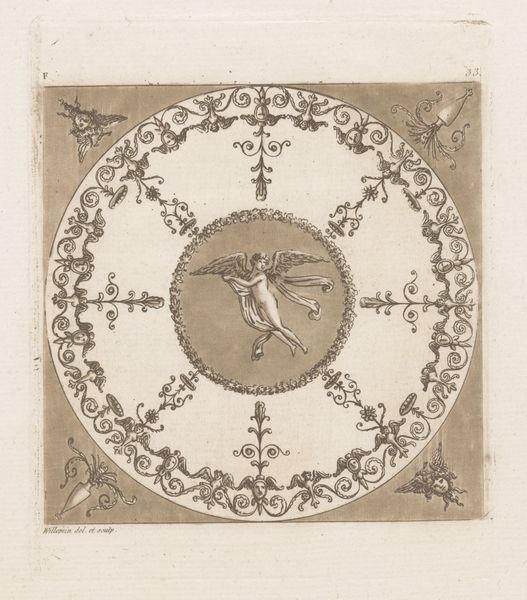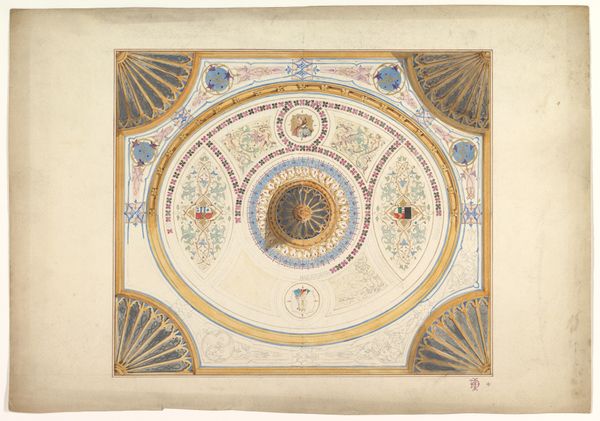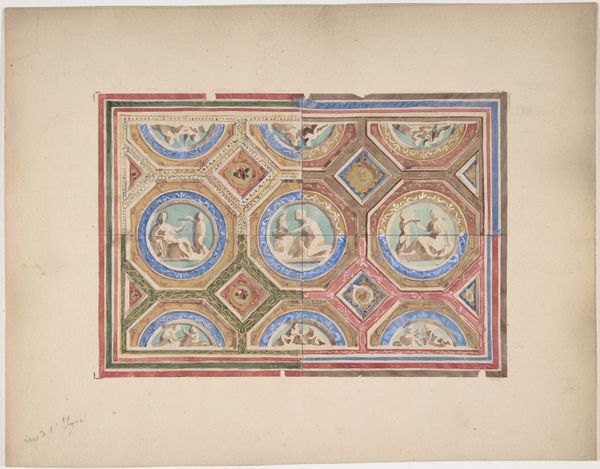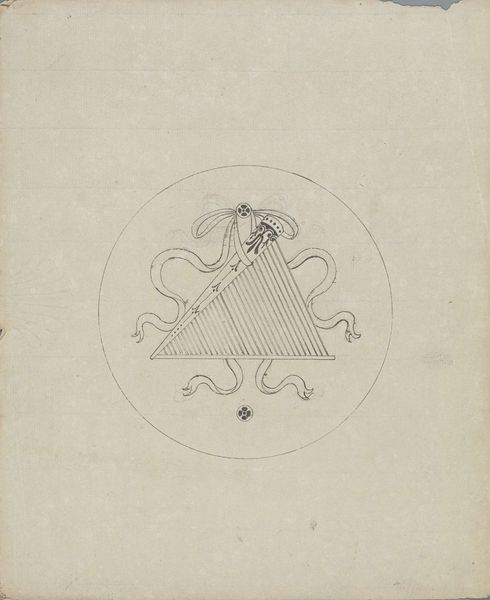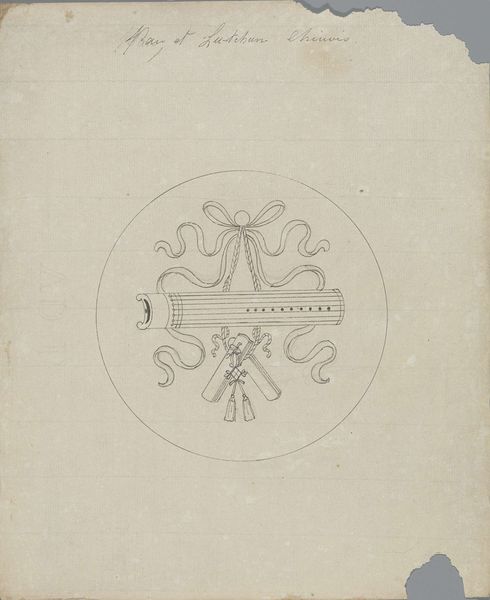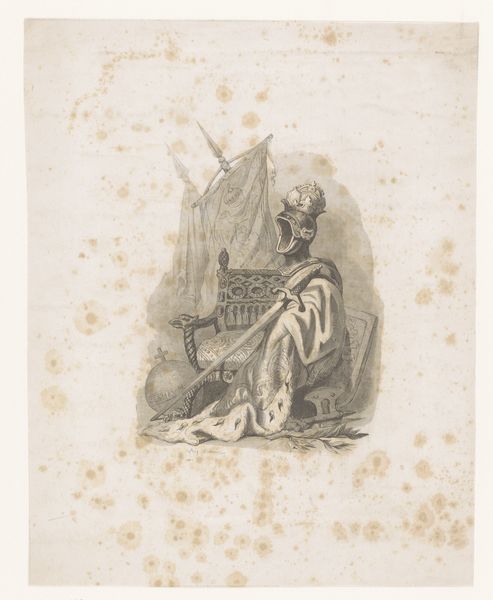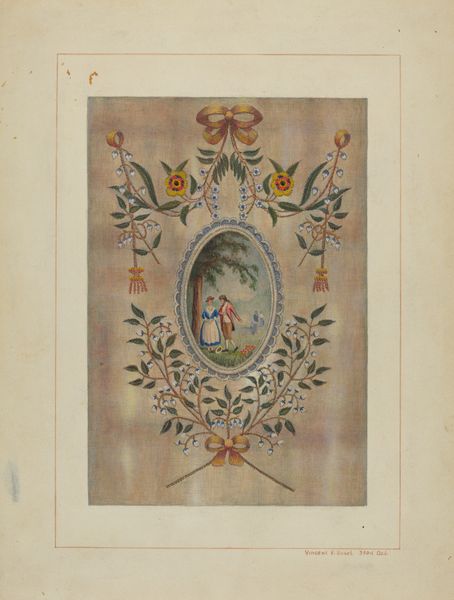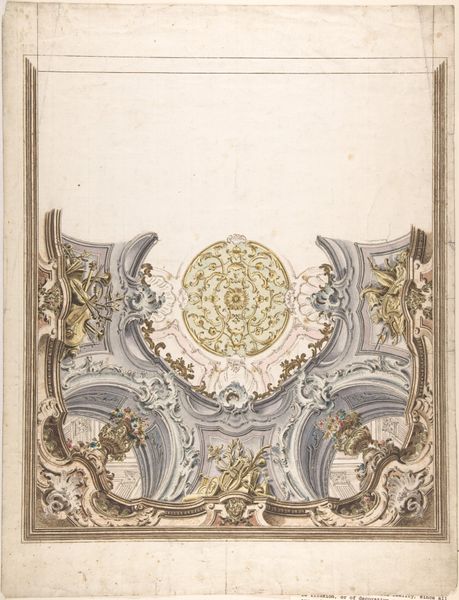
painting, watercolor
#
portrait
#
water colours
#
animal
#
painting
#
asian-art
#
figuration
#
watercolor
#
china
Dimensions: Each: 11 1/2 x 10 5/8 in. (29.2 x 27 cm)
Copyright: Public Domain
Curator: Up next, let’s look at a striking piece from the Metropolitan Museum of Art, titled "Twelve Designs for Circular Mirror," which comes from China and is dated between 1368 and 1911. It’s executed with watercolors. What are your initial thoughts on this one? Editor: The first thing that strikes me is its ethereal quality. The color palette is very muted, almost ghostly, giving the figure an otherworldly presence. The figure is placed within a complex, symmetrical circle. Curator: Precisely. Circular mirrors held particular significance, functioning not just as reflective surfaces but also as potent symbols, embodying cosmic harmony and balance within Chinese thought. The object itself connects to both Daoist and Buddhist ideas about perceiving reality, while reflecting idealized virtues in Chinese Society. Editor: And the figure? He seems to hold what could be symbols of authority and war? How might we interpret his stance, and what these instruments tell us about his role? Curator: That's perceptive. He embodies a deity or powerful official, judging by the weapons in each hand. He also wears a robe of considerable detail within the dot matrix that constitutes it. These visual elements project dominance, while he is captured within what can be easily related to Buddhist mandalas to reflect balance and power in an idealized vision of leadership. Editor: There is such compelling intersection of these ideals captured visually; the piece is not simply a representation of leadership but more specifically how the state may attempt to portray itself, reflecting values of the day back onto itself. Curator: Indeed. It speaks volumes about the way rulers or elite families projected idealized virtues and cultural dominance. Editor: Thinking about how this was displayed… Was this a reflection, both literally and figuratively, for those who gazed upon it? A mirror reflecting desired qualities back at those in power? Curator: An intriguing notion to ponder, and also serves to further enrich our experience and relationship to the objects as well as their meaning through symbolic association. Thank you. Editor: Thank you, I can feel layers to be understood about the imagery behind even such a straightforward appearing symbol of leadership.
Comments
No comments
Be the first to comment and join the conversation on the ultimate creative platform.
